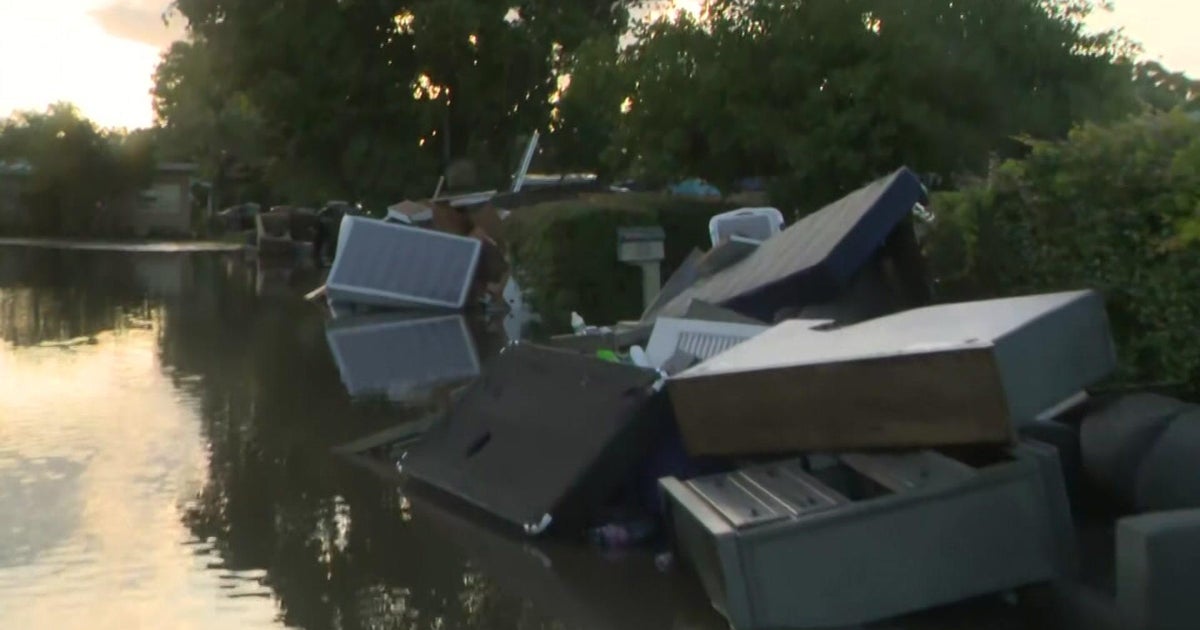US Air Force Joins South Korea For Week Long Military Drill
Follow CBSMIAMI.COM: Facebook | Twitter
MISAWA, Japan (CBS) -- The US Air Force is staging one of its largest military exercises of the year on the Korean peninsula this week.
A North Korean newspaper is calling it an "all-out provocation." National Security Adviser H. R. McMaster said over the weekend the chance of war in Korea is increasing every day.
The exercises come less than a week after Pyongyang fired off an intercontinental ballistic missile it claims can reach the "whole" mainland of the United States.
The Air Force exercises involve 230 aircraft and 12,000 U.S. military personnel.
CBS News correspondent Ben Tracy and his team went to the U.S. Air Force base in Misawa, Japan, and flew with the 35th Fighter Wing to see how they are preparing for the increasing threat from North Korea.
Tracy flew in the back seat of Maj. Richard Smeeding's F-16 fighter jet. He goes by the call sign "Punch." Seconds into the flight, the plane is punched straight up in the air.
They climb 13,000 feet at nearly 500 mph.
Soon they are soaring right up the face of a massive snow-capped mountain, and minutes later just barely above the surface of a lake.
For pilots like Smeeding, this is not a joyride; this is a serious training mission.
Flying low through the canyons of a Japanese mountain range helps him prepare for prepare for actual combat conditions in which he would try to avoid detection.
"What does this replicate in terms of combat flying?" Tracy asked.
"If there is any physical barrier between me and the missile sites or radars, there's no way for them to be able to target me, much less shoot me," Smeeding said." So you need to be able to figure how to work your way into a target area undetected.
There are 44 F-16s at the Misawa Air Base, and in a war with North Korea, they would likely be the first planes sent in to take out enemy radar and North Korea's air defenses.
"If needed and if called on, we are ready and we are ready to go right now. Hundred percent," Col. Scott Jobe said.
Col. Jobe is commander of the 35th Fighter Wing. He said repeated missile launches by North Korea have led the Air Force to increase the number but also the complexity of their training exercises.
"To make sure we are ready and prepared to respond to any sort of additional testing that the Kim regime does," Jobe said. That readiness means pilots like Smeeding spend a lot of time on the ground making sure their F-16s are ready for action, and once in the air, that he is prepared for any mission he may be given.
"What's the mission we're flying today?" Tracy asked.
"We are doing a simulated strike mission," Smeeding said. "We call it a pop attack."
In that scenario, the plane flies low over the water until he spots the target ahead.
"Got the target area in sight," Smeeding said. "Here we go!"
They then pop up in the air and simulate dropping a bomb on an enemy port where weapons or cargo may be located.
"So did we neutralize the target?" Tracy asked.
"We got it," Smeeding responded.
Nearly everyone Tracy
talked to on the base said they hope diplomacy works and that it doesn't come to an actual military conflict with North Korea. But if it does, these pilots say they are ready. As Smeeding confidently told Tracy while they were in the air: "We can handle that problem."



